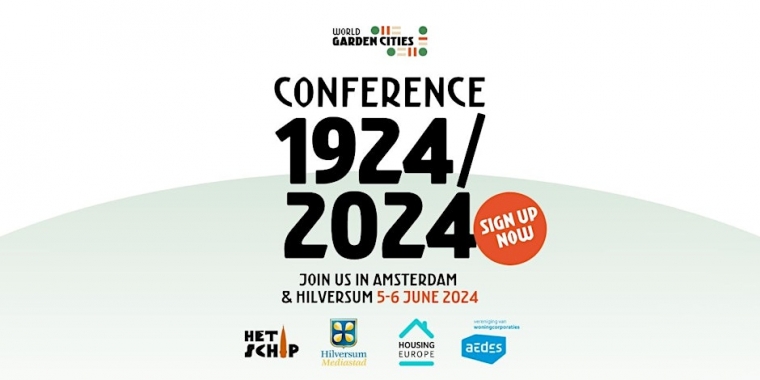The Nature of Housing - biodiversity and climate adaptation in public, cooperative, and social housing
Housing Europe Annual Conference, Amsterdam, EYE Film Museum & Hilversum
The Netherlands, 6 June 2024Save the date
On June 6th, the annual conference of Housing Europe, with significant support from Aedes, will put a spotlight on how the sector can continue integrating public, cooperative, and social homes with nature, adapting to climate change, while promoting social equity.
In the run-up to a new European Parliament for the next 5 years, what EU and national, local policies can catalyse a change in the way green cities provide affordable housing for all?
Housing Europe as the voice of public, cooperative, and social housing providers, along with its member Aedes, the Dutch Museum Het Schip, and the UNESCO-protected Hilversum, will debate what does it take to ensure that people can live in affordable homes resilient to climate change and surrounded by biodiversity.
How can we meet the need to build more affordable housing without compromising nature?
All demographic projections show that the number of households will continue to rise in many European countries and housing needs will increase proportionally. This will inevitably require new ways of building homes without compromising biodiversity and key ecosystem services.
Meeting Europe’s housing needs involves more than just delivering housing units for a good price. We need beautiful and liveable places that are adapted to climate change, are well- connected through sustainable transport, and co-exist with nature. In the week when we are voting for the next European Parliament, Housing Europe’s annual conference and Manifesto will add the need for homes that are affordable and close to nature to the equation.
The ‘Garden City’ movement, as it became known in the 19th century, and the New European Bauhaus initiative of the European Commission, came in at different times to re-imagine the places where we live: more beautiful, inclusive, and sustainable.
Today, 100 years after the first World Garden Cities conference in 1924, and amid an unprecedented cost-of-living crisis that has only exacerbated housing unaffordability and linked also to the existential need to adapt homes to the climate crisis while minimising the contribution of our sector to CO2 emissions, we ask ourselves if the utopia foreseen has become more like a dystopia.
While it has been demonstrated that green cities can have a positive impact on the environment, public health, and social cohesion, green spaces can also contribute to gentrification and, over time, the displacement of low-income residents. In many cases, the quantity of greenery in a given neighbourhood is closely correlated to its wealth. Without consideration of equity in access to nature, inequalities will only be reinforced.
Plenty of examples do exist of affordable housing projects that manage not only to preserve and enhance biodiversity but also to reduce landtake and restore key ecosystem services via brownfield development programmes.
During Housing Europe’s annual conference, social and affordable housing providers will discuss with EU decision makers, and urban experts the different ways nature and housing needs can be reconciled. In the afternoon, an excursion is organised to the Garden City of Hilversum, a best-practice example of a green and affordable place. The day will close with a networking àpero for those who wish to stay.
On the day before, June 5th, the focus at Amsterdam's Museum Het Schip will be on the enduring relevance of the Garden City movement, which has influenced social housing and urban planning in several countries since the late 19th century. In the afternoon, participants will have the option of a guided tour of garden villages and cities in the Dutch capital or an excursion to Utrecht, emphasising the revitalisation of post-war housing estates. These excursions will offer firsthand insights into urban development strategies and community involvement.